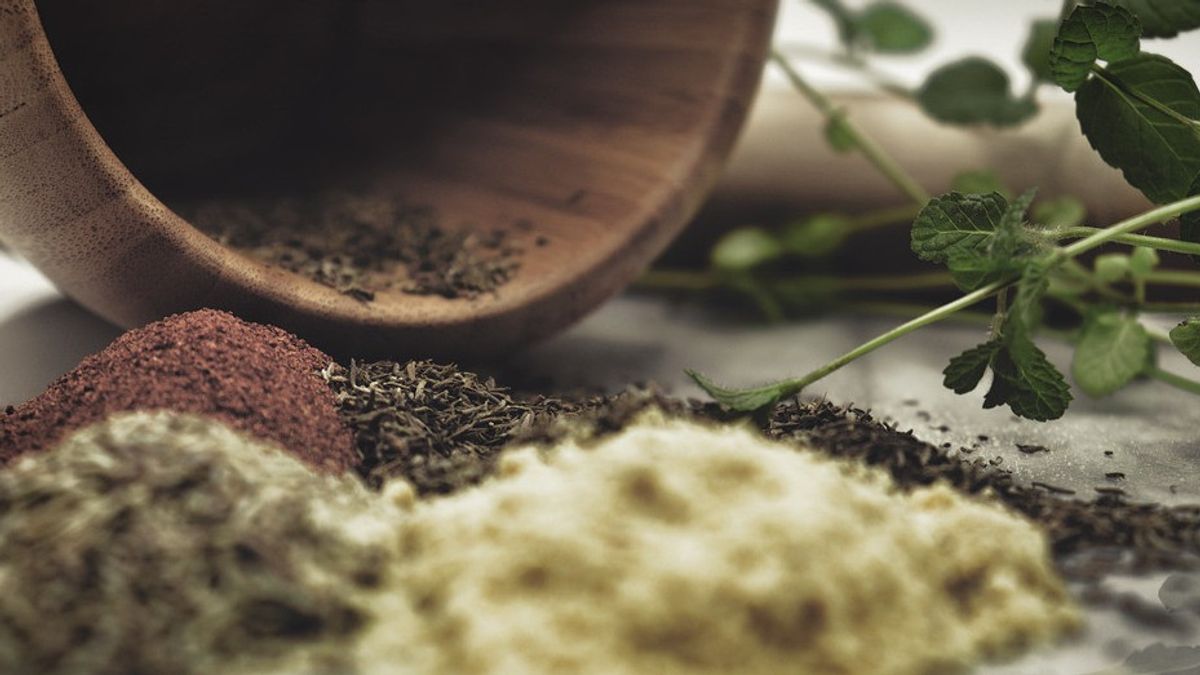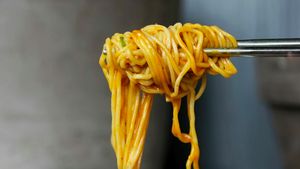YOGYAKARTA Indonesia is known as a country rich in spices. Apart from being used as a mixture of cooking spices, Indonesian native spices are also an export commodity that has high economic value.
In the past, Indonesian spices were the main commodities of world trade in ports throughout the archipelago. This trade has been carried out since the beginning of the masehi and continues to this day.
In the Big Indonesian Dictionary (KBBI), spices are designated as a variety of flavored plant products, such as nutmeg, cloves, pepper to give special smells and flavors to food.
Spices can be used in fresh form or dried first and ground into powder.
In addition to giving rise to a distinctive aroma, the addition of spices to processed food also produces a delicious and taste-inspiring taste.
Humans have taken advantage of spices from before Masehi, both for food, medicine, traditional ceremonies, and also trust.
Until now, spices are still used for various types of food around the world.
Compiled from various sources, the following are Indonesian native spices that are often used as food spices or export commodities:
An example of Indonesia's first native spice is black pepper. This type of spice comes from dried pepper fruit. Black pepper is usually used to give spicy taste to dishes.
Some areas in Indonesia that are known as pepper producers are Bangka Belitung, Lampung, Bengkulu, West Kalimantan, and South Sulawesi.
Based on data from the Ministry of Trade, in the first quarter of 2020, pepper contributed around 18.7 percent of Indonesia's total spice exports worth 40.88 million US dollars.
This original Indonesian spill is taken from the cinnamon tree bark. In cooking, this spice provides a distinctive sweet taste and aroma.
Cinnamon trees are found in Kerinci Regency and Merangin Regency, Jambi.
A number of countries that are destinations for cinnamon exports are Singapore, Germany, the Netherlands, and the United States.
Kapula is a type of spice that comes from a lot of dried capulaga fruit. This Indonesian native Spice gives a spicy taste to food.
Several regions in Indonesia are known as the producers of Kapulaga, namely West Java, Central Java, East Java, West Sumatra, and North Sumatra.
Indonesian cardamom products exported to a number of countries such as Vietnam, Thailand, and China
Pala is a spice that gives special flavors and aromas to cooking. The provinces of North Maluku, Aceh, and North Sulawesi are known as nutmeg-producing areas.
Pala is a typical Indonesian spice that is widely exported abroad. In the January-April 2020 period, exports of whole nutmeg reached 26.47 million US dollars, and nutmeg powder of 7.04 million US dollars.
Also referred to as Batak pepper, Andaliman is a spice that has a fairly spicy taste with an orange-like aroma but softer.
Based on data from the Ministry of Agriculture, this typical Sumatran spice was successfully exported to Germany as much as 574 kg, with a value of Rp431 million.
An example of Indonesian native spices next is ginger. The ginger plant is used in the Rhimpang section as a spice and raw material for herbal medicine. In food, ginger provides a spicy and warm sensation.
Several areas in Indonesia known as ginger producers are West Java, Central Java, East Java, Bali and a number of provinces in Sumatra.
The countries that are the main destinations for Indonesian ginger exports are Pakistan, Malaysia, India, Taiwan, and Bangladesh.
Cengkih is a spice that comes from aromatic dry flower buds from the Myrtaceae plant. Cengkeh is often used as a cooking spice and a mixture of kretek cigarettes.
Cengkih is a very popular spice. Eastern Indonesia areas such as Maluku, Sulawesi, and East Nusa Tenggara are known as clove-producing areas.
SEE ALSO:
Vietnam and India are the main destination countries for Indonesia's clove exports.
That's information about Indonesian native spices. Get news updates of other options only on VOI.ID.
The English, Chinese, Japanese, Arabic, and French versions are automatically generated by the AI. So there may still be inaccuracies in translating, please always see Indonesian as our main language. (system supported by DigitalSiber.id)














